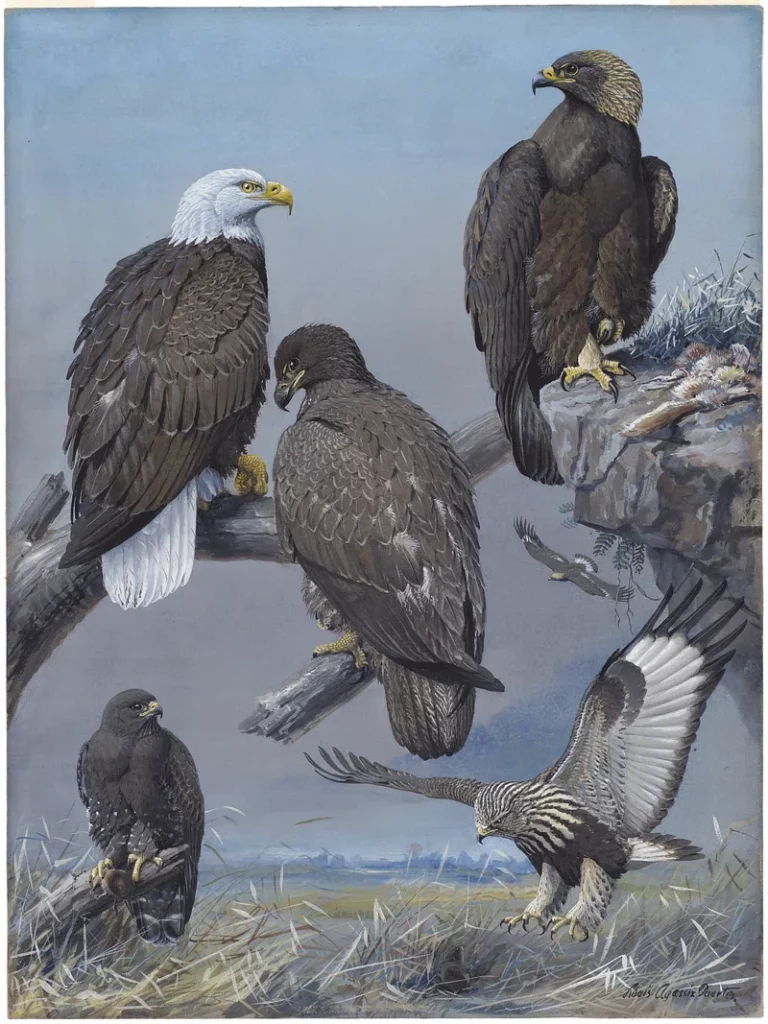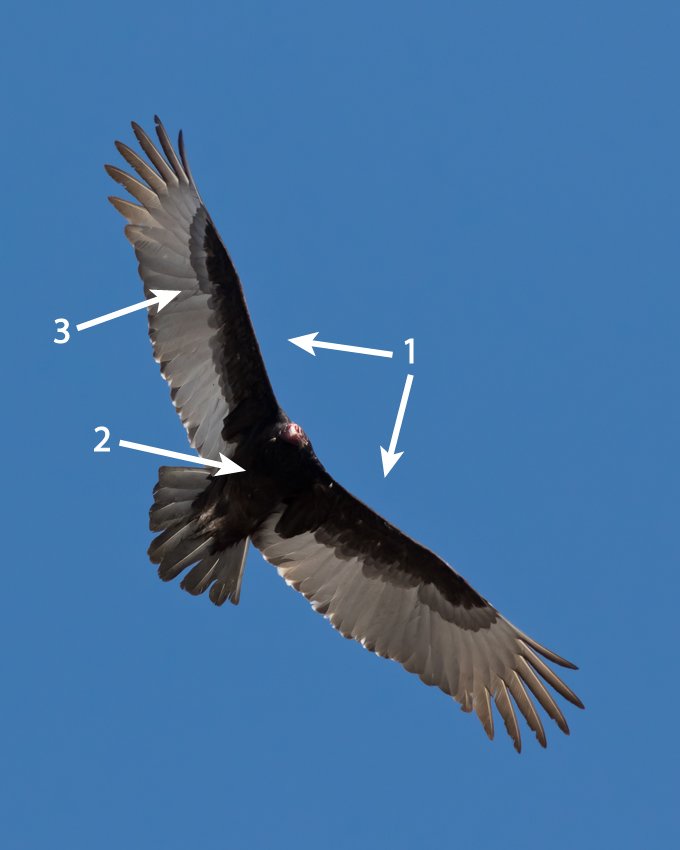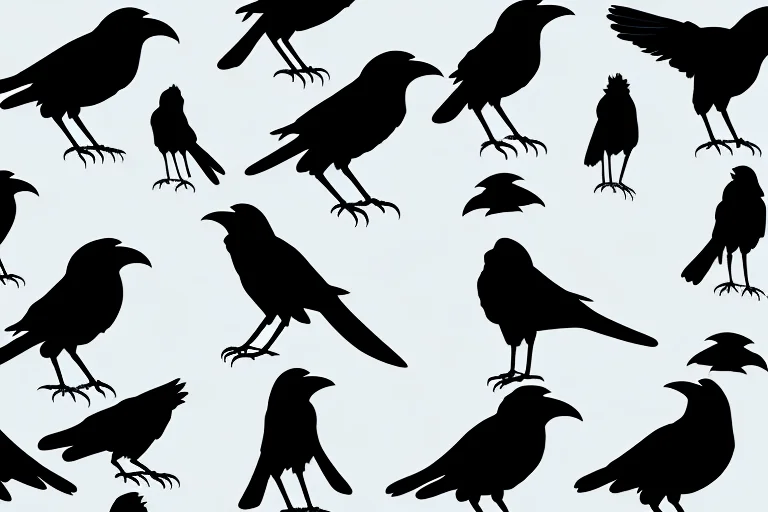Difference Between Hawks and Eagles : Majestic Birds of Prey

Did you know Difference Between Hawks and Eagles? In the vast expanse of the skies, two awe-inspiring creatures command attention and ignite our sense of wonder: the hawk and the eagle.
As birds of prey, these majestic hunters exhibit remarkable physical attributes, distinctive hunting techniques, and captivating behaviors.
Join us on an immersive journey as we explore the fascinating world of hawks and eagles, delving into their contrasting characteristics and unraveling the secrets of their captivating lives.
Key Difference Between Hawks and Eagles
Here is a table of the key differences hawks VS eagles:
| Feature | Hawk | Eagle |
|---|---|---|
| Size | Medium-sized | Large |
| Wingspan | 3-6 feet | 6-8 feet (or more) |
| Weight | 1-5 pounds | 5-15 pounds (or more) |
| Build | Stocky | Slender |
| Beak | Curved, hooked | Curved, hooked, and more powerful |
| Talons | Sharp | Sharp and powerful |
| Diet | Small mammals, birds, reptiles, insects | Small to medium-sized mammals, birds, reptiles, fish |
| Habitat | Forests, grasslands, open areas | Forests, mountains, deserts, coasts |
| Calls | High-pitched screams | Slow, powerful screams |
| Number of species | 250 | 74 |
Physical Differences hawk vs eagle
Hawks: A Diverse Array of Species
- Hawks encompass a wide range of species, each with its own unique characteristics and adaptations.
- There more than 200 species of hawks around the world.
- Species include the Red-tailed Hawk, Cooper’s Hawk, Sharp-shinned Hawk, and many others.
- Varying colors and markings allow for effective camouflage in their respective habitats.
- Smaller in size compared to eagles, with an average wingspan ranging from 20 to 60 inches.
- Adult hawks Weighing between 3 to 5 pounds on average.
Eagles: The Epitome of Power and Grace
- Eagles are famous for their grandeur and majestic presence.
- Possess a larger wingspan compared to hawks, ranging from 44 to 110 inches.
- Impressive strength and agility, allowing them to dominate the skies.
- Hooked beaks and feathers cascading down to their legs create a regal appearance.
- Adult eagles can weigh between 1 to 20 pounds.

Habitat and Adaptation: eagle vs hawk
Hawks: Thriving in Open Areas

- Hawks exhibit a preference for open habitats that provide unobstructed views for hunting.
- They are adaptable birds and can be found in various environments, including forests, woodlands, fields, deserts, marshlands, and wetlands.
- Some hawks, such as the Red-shouldered Hawk, are particularly fond of dense woodland areas.
- Others, like the Northern Harrier, can be found in open grasslands and fields.
- Marsh Hawks, as their name suggests, thrive in marshlands and wetlands.
Eagles: Conquering Heights and Waterfronts
- Eagles display a preference for nesting in lofty trees or on cliff edges, providing vantage points for hunting and protection.
- They often choose habitats near open water sources, such as lakes and rivers, as this allows them to hunt fish and other aquatic prey.
- Bald Eagles, for instance, are commonly found near coastlines and large bodies of water.
- Golden Eagles can be spotted in mountainous regions, utilizing thermal updrafts for soaring flights.
Diet and Hunting Techniques:
Hawks: Versatile Predators
- Hawks have diverse diets, preying on small mammals, insects, and small birds.
- Their hunting techniques vary depending on the species and available prey.
- Cooper’s Hawks and Sharp-shinned Hawks are known for their agility and pursuit flights, chasing down birds in mid-air.
- Red-tailed Hawks employ a perch-and-pounce strategy, scanning the ground for prey and swooping down to capture it.
- Some species, like the Northern Goshawk, excel at hunting in dense woodland areas, flushing out prey from vegetation.

Eagles: Masters of Aerial Hunting
- Eagles are renowned for their prowess in aerial hunting and their ability to snatch prey from both land and water.
- Fish make up a significant portion of their diet, and they excel at hunting them.
- They perch on high vantage points near water bodies and scan the surroundings for potential prey.
- When a suitable target is spotted, eagles plunge into the water with outstretched talons, gripping the fish with their strong claws.
- Eagles also engage in opportunistic predation, preying on small mammals, waterfowl, and other birds.
Breeding Behavior and Nesting:

Hawks: Monogamous Bonds and Nurturing Parents
- Hawks form monogamous pairs and establish lifelong mates.
- The courtship rituals involve aerial displays, soaring together, and exchanging food.
- Hawks typically breed once a year, with nesting occurring during the spring and summer months.
- Clutch sizes range from two to seven eggs, depending on the species.
- Both parents are actively involved in incubating the eggs and raising the young, with the male often providing food for the female and chicks.
Eagles: Monogamy and Nest Loyalty
- Eagles exhibit similar breeding behavior, forming monogamous partnerships that can last a lifetime.
- If one mate dies, the surviving eagle seeks a new partner.
- Eagles generally display remarkable nest loyalty, returning to the same nesting site year after year, adding to and refurbishing the nest.
- The nesting season varies depending on the species and location.
- Clutches usually consist of one or two eggs, occasionally more, and both parents participate in incubation and feeding the young.
- Young eagles fledge at around 10 to 13 weeks, but they remain dependent on their parents for several more weeks.
Visual Differences and Unique Adaptations:
Hawks: Nature’s Palette and Exceptional Eyesight

- Hawks exhibit a stunning variety of colors and markings, providing effective camouflage in their specific habitats.
- Some common colors include brown, gray, and rufous, with distinctive patterns on their feathers.
- Exceptional eyesight allows hawks to spot prey from great distances.
- They can perceive colors on the UV spectrum, which aids in locating small mammals and distinguishing subtle differences in their surroundings.
Eagles: Commanding Presence and Signature Traits
- Eagles captivate observers with their commanding presence and majestic appearance.
- Impressive wingspans and hooked beaks are distinctive physical characteristics.
- Feathers cascading down to their legs create a regal spectacle during flight.
- Their keen eyesight allows them to spot prey from great heights, enabling accurate strikes during hunting.
Observing and Understanding: A Path to Appreciation and Conservation:
Importance of Understanding Characteristics and Habitat Preferences:
- Recognizing the diurnal nature of both eagles and hawks allows for optimal observation opportunities.
- Familiarizing oneself with their specific hunting techniques aids in identifying these magnificent birds in the wild.
- Understanding their nesting behaviors and habitat preferences is essential for conservation efforts.
Cultivating Appreciation and Contributing to Conservation:
- Deepening our understanding of hawks and eagles helps foster appreciation for their ecological importance.
- Supporting organizations and initiatives focused on the conservation of these birds and their habitats is crucial.
- Participating in citizen science programs, such as birdwatching and reporting sightings, contributes valuable data for research and conservation efforts.
Conclusion:
As we conclude our comprehensive exploration of hawks and eagles, we stand in awe of their majestic presence, their unparalleled hunting skills, and their ability to adapt to diverse environments. The intricate tapestry of their physical differences, diet, habitat, hunting techniques, breeding behaviors, and other noteworthy characteristics unravels a captivating narrative of survival and triumph. Let our deepened understanding and profound admiration for these magnificent birds inspire us to protect and cherish the natural world they call home.
FAQ’s eagle vs hawk
Hawks and eagles are both birds of prey, but there are several key differences between them. Eagles are generally larger than hawks, with larger wings and tails. Eagles also have stronger talons and sharper beaks compared to hawks. In terms of hunting, hawks hunt smaller prey like rodents and smaller birds, while eagles tend to go after larger prey such as small mammals and fish.
Eagles are typically larger than hawks. Some species of eagles, like the golden eagle and bald eagle, are among the largest birds of prey in the world. On the other hand, hawks come in various sizes, with the largest hawk species being smaller than the average eagle.
Examples of eagle species include the golden eagle, bald eagle, harpy eagle, and Steller’s sea eagle. Hawk species include the red-tailed hawk, nicobar serpent eagle, and various species of true hawks. However, it’s important to note that there are many different species of both hawks and eagles.
Yes, there are some similarities between hawks and eagles. Both are large birds of prey with sharp talons and excellent hunting abilities. They are known for their keen eyesight and powerful flight. Additionally, both hawks and eagles belong to the same family of birds known as raptors.




